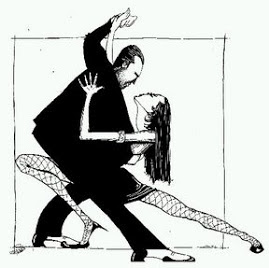No Latin American community is oblivious to the concept of dispossession. For centuries the indigenous communities have had to fight to preserve their traditions and protect them from a system determined to annul them. The struggle to maintain their identity has been carried out in various battlefields: in cornfields against sugarcane plantations, oral tradition against the imposition of Spanish, resistance to tyrants such as Ríos Montt, who was the first ex-president to be convicted of genocide by a court in his own country.
Now the Mayan weavers present a new battle for the right of communities to be recognized as ‘collective’ authors of their artistic creations. The National Mayan Weavers Movement has proposed a legal strategy (through Ley N. 5247) to protect its legacy and ensure that the intellectual property of indigenous peoples is recognized. While the idea is first to protect the güipiles (distinctive clothing of the Mayas), the reform is expected to benefit more art crafts.
The güipiles:
The production of this indigenous craft carries long hours of manual labour as well as considerable level of skill. Linking the strands of vibrant colours is an intimate and spiritual process. In the fabric is embodied the ‘cosmovision’ of an ancestral community. It is an account of unhappiness, faith and cultural grandeur that represents the core of Mayan idiosyncrasy closely linked to its land, which is sacred.
The bill
It has been formally accepted, it must now go through Congress . It seeks to reform the articles of 4 legislations and deals with the following topics:
To recognise indigenous peoples as authors. At the moment only natural or legal persons are granted this right (art 5 Ley de derechos de autor y derechos conexos); if the work is in the public domain the owner of the said work cannot oppose the use of it by third parties who produce different versions (art 12 Ley de derechos de autor y derechos conexos); there must be a civil association legally constituted without political or religious activities to be able to enjoy protection for their IP (art 113 Ley de derechos de autor y derechos conexos); ban on the export of cultural goods (art 11 Ley de Protección y Desarrollo Artesano); to produce a list of acts that constitute a violation of copyright (art 274 Código Penal de Guatemala); among others.
This initiative would put an end to the need to make artistic ‘individual’ creations and thus, allowing communities’ creations too (Guatemala as member of the United Nations voted in favour of the Declaration on the Rights of Indigenous Peoples (UNDRIP)– the Declaration addresses both individual and collective rights). The Bill would also provide protection against third-party industrialization and safeguarding the sacred knowledge (fulfilling UNESCO’s aims i.e. to safeguard intangible cultural heritage).
In the long history of racism by the Guatemalan state, it is promising to find this group of women, who have rejected the use of national or foreign intermediaries. Mayan weavers do not need anyone to use their own voice and are defending what is theirs, both because of the millennial heritage and the product of their creativity and work.
This initiative echoes other sui generis efforts such as that of Mexican gum producers who jealously protect the Mayan jungle while exporting tons of organic and biodegradable chewing gum to 26 European countries through the Chicza brand. It represents about 1,500 Mayan producers in south-eastern Mexico.
We may be on the threshold of a new stage in the management of IP in Latin America, one where the identity of our peoples is recognized rather than forced into a model in which they have no place. The struggle of the Mayan weavers is a celebration of our community culture.
Written by Claudia Fernandez Padilla (edited by Patricia Covarrubia), LLM candidate in Intellectual Property Law, Brunel University, UK.













1 comments:
Write commentsI thought that the mayan hüipil was made by mexican ancestors, anyhow if its theirs or ours... They should be protected in all kind of ways. As it happened when a chinese registrated the image of the Virgin of Guadalupe for its commercialitation as it was protected with the industrial property, we couldn't do anything... for us was a devastating news as if we were being invated again by foreigners to enrich their hands with our symbols, culture, colors, etc. A big step for our neighbors with this battle, hopefully they'll win this struggle and mantain their intelectual properties untouched.
Reply